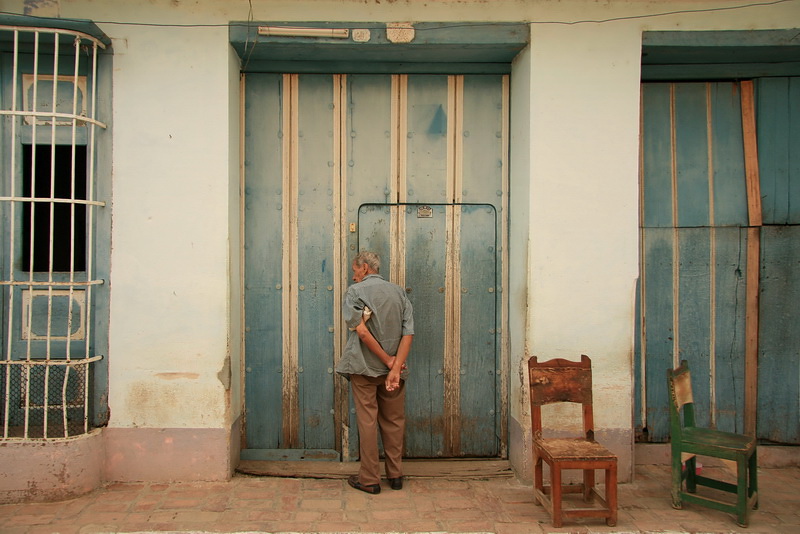Eating for Five Pesos
Yenisel Rodriguez

At the corner of my block there exists one of the few commissaries in Havana. It’s neither a State restaurant nor a private “paladar.” It’s simply a commissary. In the Havana of the first half of the 20th century, commissaries were characteristically places where poor people could kill their hunger.
Two categories of these eateries existed: the Chinese ones, which historians say were filthy and had the worst food; and those of the Spanish, which had a better reputation; one wouldn’t find little beetles in the white rice and you wouldn’t get your elbows dirty from eating on a grimy tablecloth.
The commissary at the corner by my house seems more like the former, not only because of its poor hygienic conditions but also for the Asian eyes of the black women who serves the food. Despite the dirt and beetles, the commissary is a good thing for many of the local residents of the Santo Suarez neighborhood, especially because they can eat there for only five pesos (about 25 cents USD).
The plate of the day consists of: White rice, beans, egg tortilla, root vegetablem piece of cake
A few days ago I went there famished, intent on ordering a double portion. I sat down at one of the tables and was surprised to find out how important it is to know a place from the inside.
Most of the customers were retirees, and at my table there were four other people besides me. Two old men seated there allowed themselves the luxury of ordering “soup for a peso” after having eaten the house plate of the day. The stalwart of the group, an immigrant from the east of the island, requested two pork fricassees for nine pesos each. “I’ll wash these down with two bags of soya yogurt that I have back in the room,” he said with a certain degree of pride.
The two other diners (a young guy who was dressed like a campesino and a teenager) ordered two plates of spaghetti for five pesos each. “In a private paladar this would cost twenty pesos,” said the one wearing the yarey (a straw-like farmer’s hat), while he struggled to dissolve the small pieces of “potato cheese” that adorned his dish.
I followed the example of the stalwart guy, and after 45 minutes of waiting I left for home with my double portion of cold fricasseed pig fat. At the beginning I had thought about buying the specialty of the house, but I wasn’t hungry enough to eat a tortilla made out of synthetic eggs. When I got home I boiled a few plantains to finally fill me up.
I had never before been sensitized to poverty from the aesthetics of sentimentality and compassion; however something inside me became illuminated when I talked with my partners around the table. There were moments when it felt as if nothing were lacking. What I discovered was that a poor person’s life goes beyond their poverty.
At the commissary on the corner by my house, I learned that there exist many ways of experiencing poverty, and at times I offered no resistance to recognizing my own.





